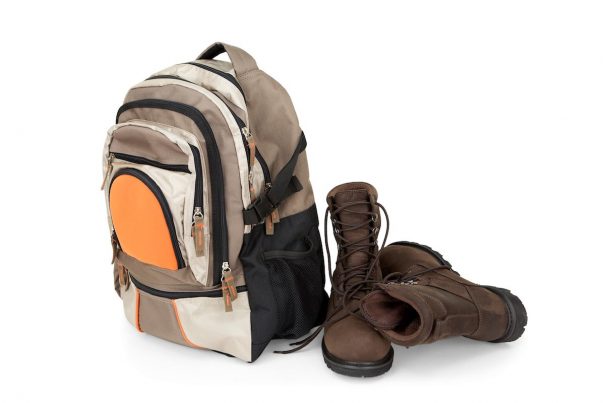Tips for finding the best get home bag (GHB) for your prepping needs
Sunday, October 13, 2019 by Zoey Sky
http://www.bugout.news/2019-10-13-tips-best-get-home-bag-ghb-for-your-prepping.html

Should SHTF while you’re at work, do you have access to gear that you can use to get home safely? If the answer is “no,” prepare a get-home bag (GHB) immediately. (h/t to TheSurvivalistBlog.net)
GHBs and BOBs
A bug-out bag (BOB) contains supplies that will help you survive for at least 72 hours or more if you need to evacuate your current location. BOBs usually contain food and water, a first aid kit, and tools for firestarting, insulation, and building shelter.
Meanwhile, a GHB will help you return home safely if you’re outdoors when SHTF. GHBs are ideally stored in your vehicle if you’re leaving home or at work. GHBs are about the same size as a BOB or smaller, depending on the distance you travel from home on a regular basis.
A GHB contains items you need for emergencies that you may face if you ever need to go home on foot. (Related: How to get home when SHTF.)
GHB considerations for commuters
Think of your daily commute. How long does it usually take? Do you take the same route every day? Is heavy traffic going to be an issue?
Once you get the details down, plan your GHB accordingly. Decide on a safe route that you can take when SHTF and think of several alternate routes to cover all your bases.
Choosing your bag
When deciding on a backpack for your GHB, select a bag that’s simple and sturdy. You don’t want to attract unwanted attention with a “tactical-looking” bag when SHTF.
Get a bag that you can carry comfortably for several hours. Avoid cheap knockoffs that will fall apart if the bag is packed with your supplies. Once you prepare your supplies, practice walking around the block with a full GHB. You should be able to carry your supplies fairly easily. If it’s too heavy, reconsider some items to keep your bag light.
Once you select a bag, decide where you’re going to keep it. If you drive to work, keep your GHB in your car. You can also store your bag in your office locker.
What to pack in your GHB
Below is a basic list of items in a GHB. Add or remove items that are specific to your personal needs.
- Food – Pack food items that are light and have a long shelf life, such as beef jerky, chocolate bars or energy bars, dried fruit, hard candies, shelled sunflower seeds, and trail mix.
- Drinking water – A large water bottle full of clean water will keep you hydrated as you make your way home. To keep your bag light, get a water filter straw. Just make sure you can find and gather water on the way.
- Cordage – Include a paracord or rope in your GHB for various survival purposes like gear repair or for securing tools.
- Tarp – Use a tarp to build a makeshift shelter if you are delayed from going home.
- Mylar/space blanket – This light, shiny material will keep you warm during cold nights.
- Knife or small hatchet – A sharp fixed-blade knife is a versatile tool and self-defense weapon.
- Multitool – A multitool has other useful features and smaller blades for detail work.
- First aid kit – Include items like an antiseptic solution, bandages, gauze, gloves, and a tourniquet in your kit.
- Flashlight – You need a bright, sturdy flashlight with long battery life. Secure the flashlight with a pocket clip or lanyard.
- Headlamp – A headlamp is optional, but you may need it if you want to work hands-free in the dark.
- Spare batteries – Bring spare batteries for your flashlight, headlamp, and other battery-powered devices.
- Lighters – Keep two lighters and a firestarter in your GHB so you can cook, boil water, and stay warm if the journey takes several days.
- Firearm – You may need a gun for self-defense when SHTF. Learn how to use your weapon properly and acquire the necessary permits.
- Note pad and pen or pencil – Take notes to monitor information during dangerous times or make detailed sketches of your next destination.
- Maps – Bring detailed paper road maps, general region maps, and topographic maps.
- Compass – Learn how to use a button, field, or lensatic compass to navigate a paper map.
- Gloves – Use heavy leather gloves for protection when navigating a dangerous area. Lighter technical gloves are better for shooting, but they offer less protection.
- Spare socks and underwear – If you don’t want to make your GHB too heavy with a full change of clothing, pack spare socks and a change of underwear to prevent rash and sores.
- USB flash drive – Secure electronic copies of important documents and IDs in a password encrypted flash drive.
- Emergency funds – Always keep extra cash on hand for any emergency purchases such as gear or supplies.
Additionally, keep a spare pair of comfortable walking shoes in your GHB. When SHTF, change into comfy sneakers or hiking boots. You should also have a change of weather-appropriate clothing in your GHB.
Pack a get-home bag with essential gear and supplies and keep it handy. When SHTF, just grab your GHB, put on your walking shoes, and get out of Dodge.
Sources include:
Tagged Under: Tags: basic supplies, bug out, bugout, clean water, Collapse, disaster, emergency, first-aid kit, Get Home Bag, GHB, how-to, multitools, off grid, patriot, preparedness, prepping, prepping tips, self-reliance, SHTF, survival, survival supplies, Survival Tips, survival tools, tips

